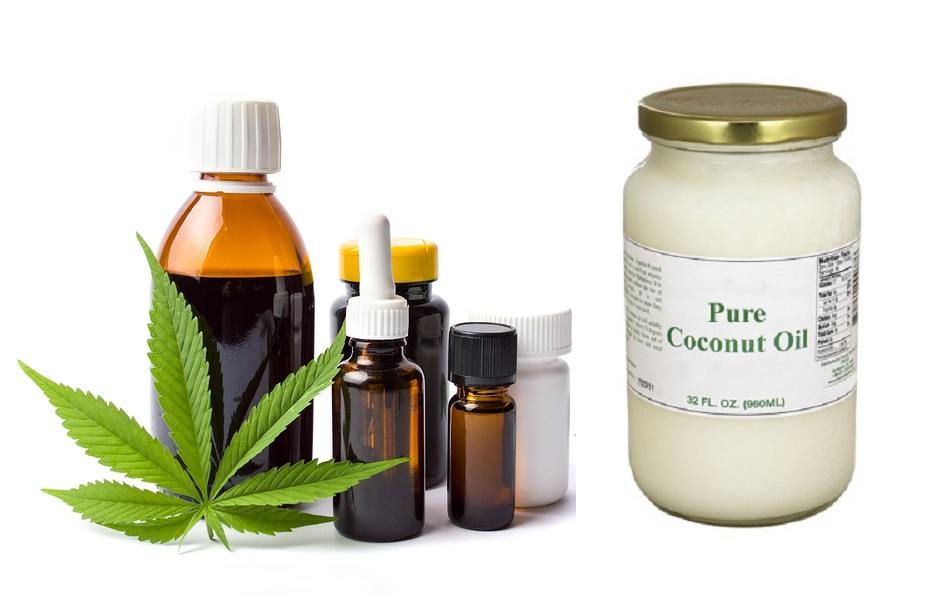
by Paul Fassa
Health Impact News
Among medical marijuana proponents there has been a lot of discussion about the various ways of combining coconut oil and cannabis as an ideal carrier for combining cannabis’ external cannabinoids with the body’s internal cannabinoid system for healing.
At first this combination was used to facilitate suppositories that when inserted rectally would somehow allow those who are THC intolerant to absorb full spectrum plant cannabis’ benefits to be absorbed without the high.
Then the coconut oil with cannabis was contained in capsules to create standardized cannabis edibles for medical consumption. This is what 77 year old Stan Rutner used to cure his terminal lung and brain cancer during hospice under his daughter Corrine’s and son-in-law John Malanca’s custody in California. (Source)
Why Cannabis Infused Coconut Oil Has Become Popular
Cannabis infused coconut oil is an edible. Marijuana edibles are applied medically more often than smoking because more full spectrum cannabis can be packed into an edible than one can smoke at a given time.
Highly concentrated cannabis oil as originally introduced by Canadian cancer survivor Rick Simpson during the 1990s, is even more powerful. He once said that smoking marijuana makes much of its medicinal qualities go up in smoke.
But cannabis oil can be infused into butter or coconut oil to allow for easier consumption at higher doses than what smoking delivers. There are also ways to cook marijuana buds into coconut oil or butter without resorting to the oil.
More importantly, it stays in the body longer and is metabolized and distributed throughout the body’s endocannabinoid system’s receptors where it needs to be for those who are dealing with chronic pain, illness, or diseases such as cancer.
Most medical cannabis edible users take one dose in the morning and one in the evening, instead of having to light up and puff every couple of hours with less effective medicinal results.
Cannabinoids are fat soluble. So using a cannabis infused fat makes the cannabis more easily bound to cannabinoid cells’ receptors. The fat also helps maintain cannabinoid integrity with its passage through stomach acids, similar to liposomal supplements.
All our cell walls or membranes are fat (lipid) based. Cell membranes are vitally important because they separate the cells in the body from their outside world (“membrane”). Hence, fat, or lipids, is critical because it surrounds all of the cell membranes. Lipids allow for the exchange of nutrients. (Source)
The fats of choice for transporting cannabis have always been healthy whole saturated fats. It was once butter, which could be spread on toast or pancakes, but now coconut oil has replaced butter as the fat of choice because of its superior health qualities and easier digestion. Coconut oil is now considered the best transporter of ingested cannabis.
Coconut oil contains medium chain fatty acids (MCFA) or medium chain triglycerides (MCT). It is easily metabolized by the liver and converted into energy. The energy appears as ketones that insulin resistant cells can utilize for energy easily, especially insulin resistant brain cells among Alzheimer’s disease (AD) victims. Now some health experts label Alzheimer’s as diabetes 3.
There are several stories of dementia avoidance and reversals, even with Alzheimer’s disease, using coconut oil alone. (Source)
In addition to the easily digested fatty acids for complete absorption the body needs, which correspond to the lipid (fatty) cell membranes, coconut oil contains three essential vital nutrients:
Lauric acid: A highly potent anti-microbial capable of handling antibiotic resistant germs, and relieving the main source of stomach ulcers and Gastro-Esophogeal Reflux /Disease, commonly referred to as GERD, the Helico Pylori Bacteria. Coconut oil is approximately 50 percent lauric acid.
As a natural antimicrobial, lauric acid spares the “good bacteria” and is without side effects. It also contributes to lowering blood pressure.
Caprylic acid: This is an excellent natural anti-fungal which is a large part of coconut oil. Pharmaceutical anti-fungal drugs do deliver some nasty side effects; any short term positive results are impossible to maintain because of those side effects.
A Tufts University study determined that mice fed coconut oil reduced candida overgrowth by 90 percent without side effects. Candida is a silent plague spreading among us humans causing all sorts of fatigue, skin issues, and poor health issues as well as being a potential precursor to cancer. They recommended ingesting three or more tablespoons of coconut oil daily for treating candida. (Source)
How to Infuse and Use Cannabis with Coconut Oil
First the easy way. Simply purchase one gram of high quality cannabis oil. Depending on your desired potency, use a clean 8 or 16 ounce jar with a lid filled near the top with coconut oil, which has been allowed to melt into pure liquid.
That only requires an 80 degree Fahrenheit temperature over time. You can speed that time up by slightly warming it without overheating.
Squirt the cannabis oil from its syringe into the liquid coconut oil. Mix thoroughly by shaking and inverting the jar. Then refrigerate immediately. Remove the solidified coconut oil. It shouldn’t take over two hours or so.
From then on, if your ambient room temperature is under 80 degrees F, 75 is ideal, simply take small amounts of the soft coconut oil cannabis mixture, according to your medical needs, once or twice daily.
Caveat: Remember, cannabis edibles may take a half-hour or more, maybe as long as two hours, before you feel the result. Be patient and don’t take more unless that time has elapsed without results.
Another technique for cannabis infused coconut oil is making it into suppositories. Many use suppositories to minimize the high while enjoying the medical benefits. Using the easy method described above, pour the liquid mix into an inexpensive suppository mold tray you can order online. Refrigerate, taking out one at a time for using as a suppository.
Here is one recipe for making cannabis infused coconut oil the longer, harder way, with the plant’s buds and twigs. And here is the longer way to create cannabis suppositories from scratch.
If you search “cannabis infused coconut oil” on YouTube, you’ll find a few different approaches performed on camera for easy instructional guidance.
Comment on this article at HealthImpactNews.com.



 Research Continues to Show Virgin Coconut Oil's Effectiveness in Treating Cancer
Research Continues to Show Virgin Coconut Oil's Effectiveness in Treating Cancer Coconut Oil Continues to Benefit Alzheimer's Patients over Drugs as Studies Continue for Neurological Benefits
Coconut Oil Continues to Benefit Alzheimer's Patients over Drugs as Studies Continue for Neurological Benefits How the Simple High-Fat Low-Carb Ketogenic Diet Continues to Change People's Lives
How the Simple High-Fat Low-Carb Ketogenic Diet Continues to Change People's Lives New Studies Continue to Show that Coconut Oil is the Best Oil for Treating Skin Conditions and Maintaining Healthy Skin and Teeth
New Studies Continue to Show that Coconut Oil is the Best Oil for Treating Skin Conditions and Maintaining Healthy Skin and Teeth New Study Confirms Health Benefits of Coconut Oil and USDA False Claims Against It
New Study Confirms Health Benefits of Coconut Oil and USDA False Claims Against It